The Most Beautiful Castles Around The World Through Dutch Photographer’s Lenses
Vincent Croce is a Dutch photographer. His passion is for travelling and capturing ancient castles through his camera lenses. Over the years, Croce has traveled around the world and took many photos of the castles and beautiful mansions.
“Next to being a professional photographer, I also might be a bit of a castlephile. If that is even a thing. Over the years, I developed a soft spot for old castles in stunning places. It always makes me a bit sad when I find out that a great-looking castle is surrounded by ugly houses or modern commercial buildings.
No matter how impressive the castle itself may be, it immediately spoils the authentic castle vibe. However, there are still some examples where over the past centuries, little has changed and it almost feels like you are a time-traveler”, Vincent wrote on Bored Panda.
Here is some of his best works.
1. “Classic View On Neuschwanstein Castle In Bavaria”
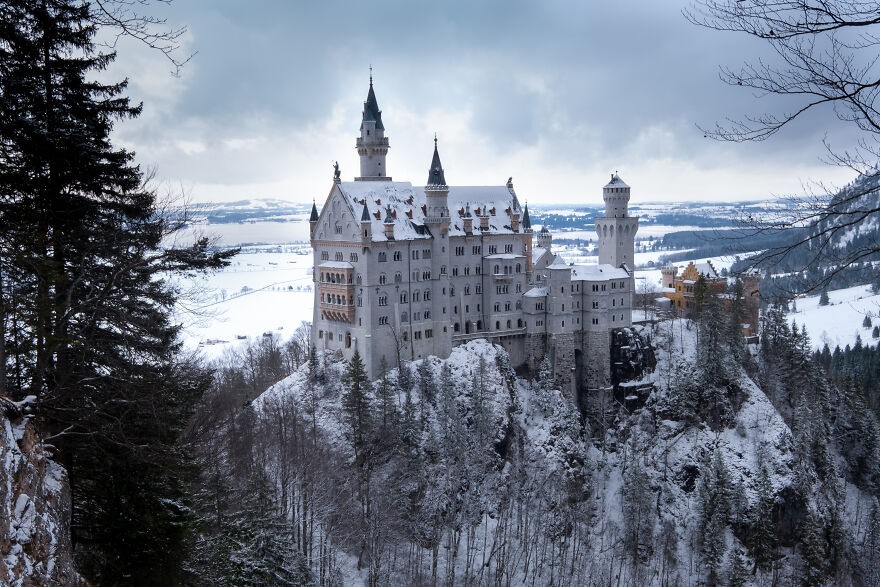 |
| Photo: Vincent Croce |
Seven weeks after the death of King Ludwig II in 1886, Neuschwanstein was opened to the public. The shy king had built the castle in order to withdraw from public life – now vast numbers of people came to view his private refuge.
Today Neuschwanstein is one of the most popular of all the palaces and castles in Europe. Every year 1.4 million people visit "the castle of the fairy-tale king". In the summer around 6,000 visitors a day stream through rooms that were intended for a single inhabitant. This – in combination with the alpine climate and light – leads to considerable stress on the valuable furniture and textiles, which we are working hard to preserve.
The setting of Neuschwanstein could not be more idyllic. However, movement in the foundation area has to be continuously monitored, and the sheer rock walls must be repeatedly secured. The harsh climate also has a detrimental effect on the limestone façades, which will have to be renovated section by section over the next few years. It also served as inspiration for Disneyland’s Sleeping Beauty Castle.
2. “Burg Eltz In Autumn. Just A Magical Combination”
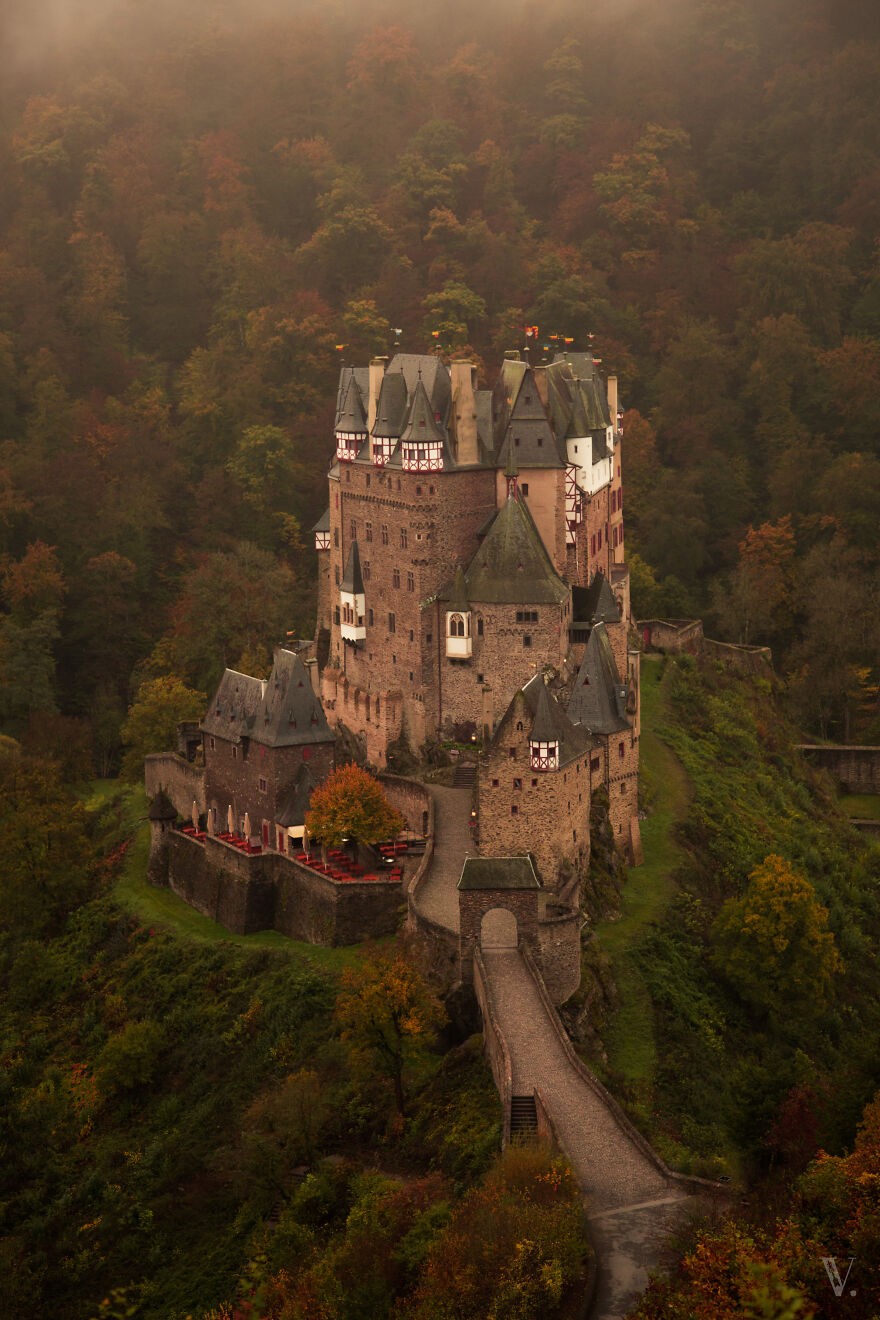 |
| Photo: Vincent Croce |
Germany is known for beautiful castles. Many have crumbled over time due to wars, weather, or neglect. But Burg Eltz still stands as a monument to Germany’s rich heritage of counts and prince-electors.
This magical medieval castle with its red-painted timber, towers, and bays is unlike any other in Germany. Its beauty has even been said to rival that of Germany’s most famous castle, Neuschwanstein. It’s nestled into the hills above the Mosel River between Trier and Koblenz in the town of Wierschem.
Burg Eltz stands on a 70-meter-high rock surrounded on 3 sides by the stream Eltzbach. It’s one of the only 3 medieval castles still intact on the left bank of the Rhine River. Construction on Burg Eltz began in 1157 and was completed nearly 500 years later.
What makes Castle Eltz particularly interesting, is that is has been owned by the same family for 33 generations, for nearly 850 years, and is still owned and upkept by the Eltz family today.
Up until 1815, the castle was owned by concurrently by 3 different branches of the Eltz family; the Kempenich, Rübenach and Rodendorf branches.
In 1815, it was taken over exclusively by the Kempenich branch. During the 19th century, Count Karl zu Eltz, began the restoration of his ancestral home.
His heirs have been managing the costly upkeep of the castle. Because the caretaker and members of the Kempenich family still occupy one-third of the castle, the tour only takes visitors through the Rübenach and Rodendorf sections of the castle.
3. “It Took A 300-Km Detour And A Terrible Few Hours' Sleep In The Car But It Was Definitely Worth It When The Sun Kissed The Towers Of The Fairytale-Like Pierrefonds Castle”
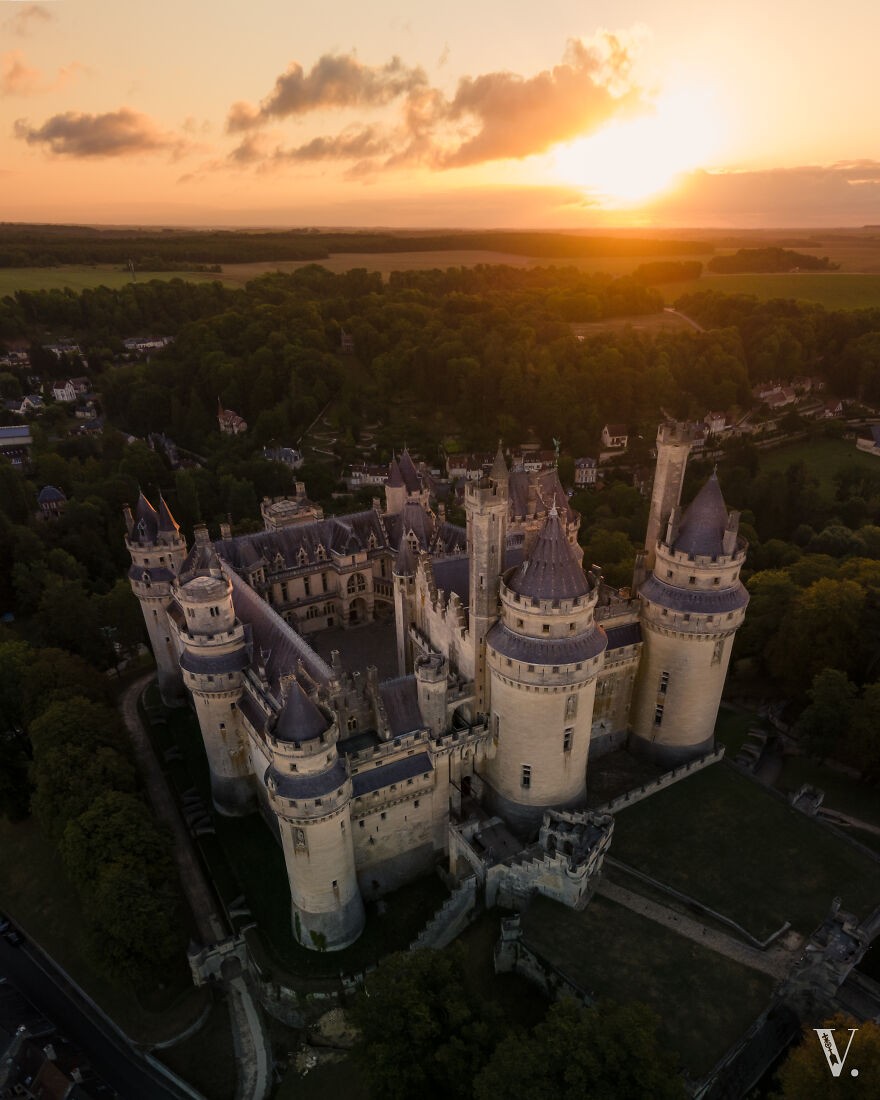 |
| Photo: Vincent Croce |
On the edge of the Compiègne Forest in Oise, Pierrefonds Castle is remarkable for its surprising history. Built in the late 14th century by the Duke Louis d'Orléans, it was dismantled in the 17th century. It was completely abandoned and was in ruins when Napoleon I bought it. But it was not until the reign of Napoleon III that work began to rebuild it in 1858. This project was entrusted to the architect Eugène Viollet-le-Duc, who decided to turn it into a castle worthy of the Middle Ages. Although Viollet-le-Duc focussed on the Gothic style, he still gave free rein to his creativity and created a majestic castle with ramparts, loopholes, a wall walk with machicolations, a keep, towers and mysterious gargoyles, as well as footbridges, porticoes and galleries.
Inside, the rooms alternate between Gothic, Renaissance and Art Nouveau styles. The Hall of the Nine Worthy Women, without doubt the most beautiful part of the castle, is the ceremonial room, 52 metres long and richly adorned with polychrome decorations. In the cellars of the castle, discover the unusual display called the "Recumbents' Ball", which reveals recumbent and orant statues against a backdrop of sound and audiovisual effects.
Scenes from famous films were shot here, such as "The Messenger: The Story of Joan of Arc" and "The Visitors".
4. “Hohenzollern Castle On An Autumn Morning. How Can This Even Be Real?”
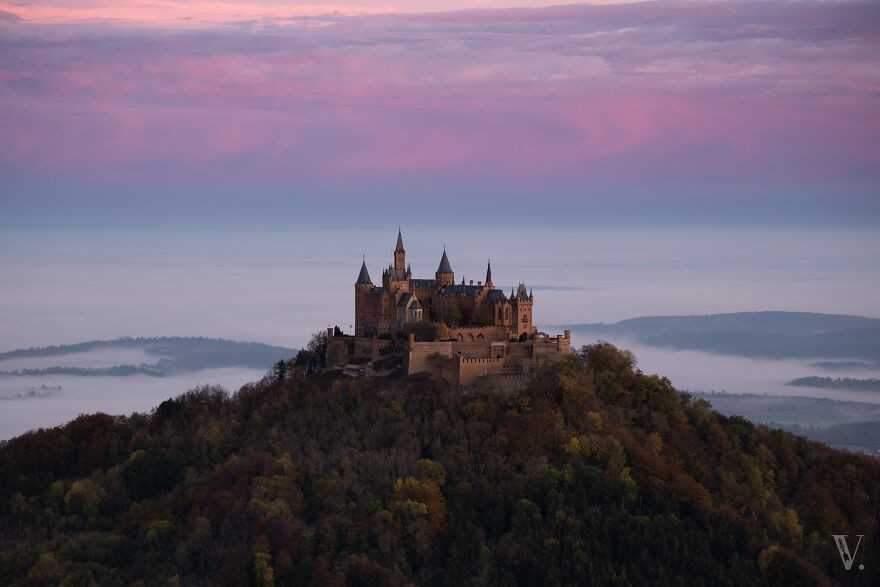 |
| Photo: Vincent Croce |
Hohenzollern Castle – the ancestral seat of the Prussian King and Princes of Hohenzollern – stands proudly almost 900 metres above the Swabian Jura, fortified with towers and battlements.
Something of a Romanticist on the throne, King Frederick William IV of Prussia had a love of the fine arts and a poetically sentimental attachment to the Middle Ages. And that's probably why he commissioned Friedrich August Stüler, a top architect in Berlin at the time, to reconstruct the ruins of his ancestors' castle. He brought the overriding ideal vision of a medieval knight's castle to life – it may have been a bit behind the times but it is still stunning and overwhelmingly beautiful to this day.
The cornerstone was laid in 1852 and the reconstruction project was finally completed in 1867. The castle has 140 rooms in total, with highlights including the library with its incredible murals, the King's bed chamber, a family tree room and the Queen's room known as the Blue Salon. The interior design is splendid with its gilded coffered ceiling, stunning marquetry flooring and portraits of Prussian royals. And for anyone who isn't so bothered about monarchy ideals, the castle's own brewery makes its own beer called PREUSSENS.
5. “Chateau De Miolans In Savoie (France) In Fact, It Used To Be A Prison, Believe It Or Not”
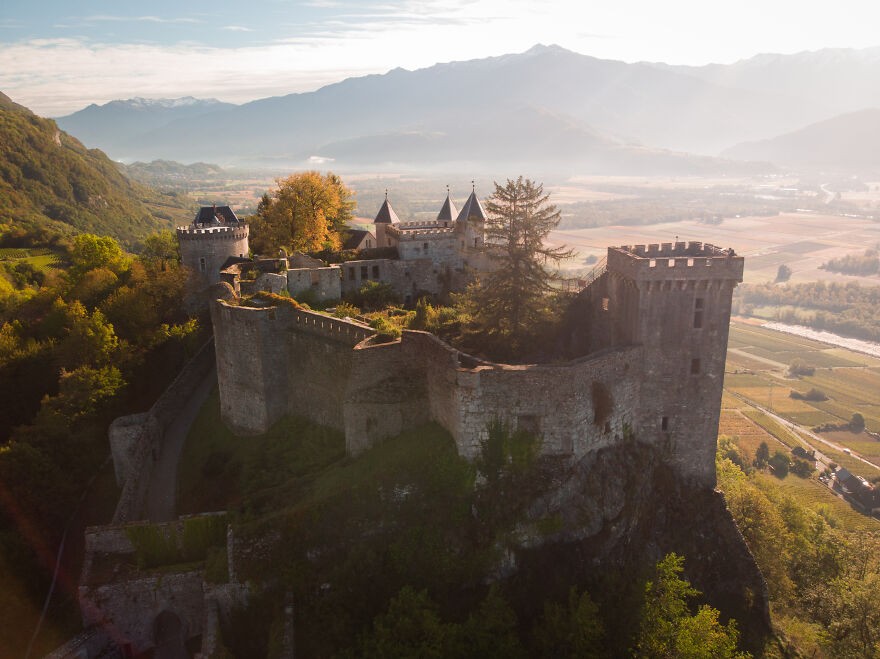 |
| Photo: Vincent Croce |
Classified as an historic monument since 1944, Miolans Castle stands at an altitude of 550 meters on a rocky cliff overlooking the Combe de Savoie.
The earliest castle stood on the site of the Saint-Pierre Tower, a primitive dungeon built by the lords of Miolans in the l2th century. In the late 14th century, Jean de Miolans began expanding the castle, and Anthelme IV modified it in the l5th century to keep step with developments in artillery. These improvements solidified the power and autonomy of this family not only in Savoy but also in Dauphiné and Viennois. When the dynasty died out in 1523, the castle passed into the hands of Duke Charles III of Savoy, but by then had become too outdated for military purposes. From 1564 to 1792, Miolans Castle served as a state run prison. The Marquis de Sade was one of its most famous prisoners. The Guiter family, owners of the monument since 1869, has restored the castle and opened it to the public.
6. “Chateau De Methon-Saint Bernard. The Disney Force Is Strong In This One”
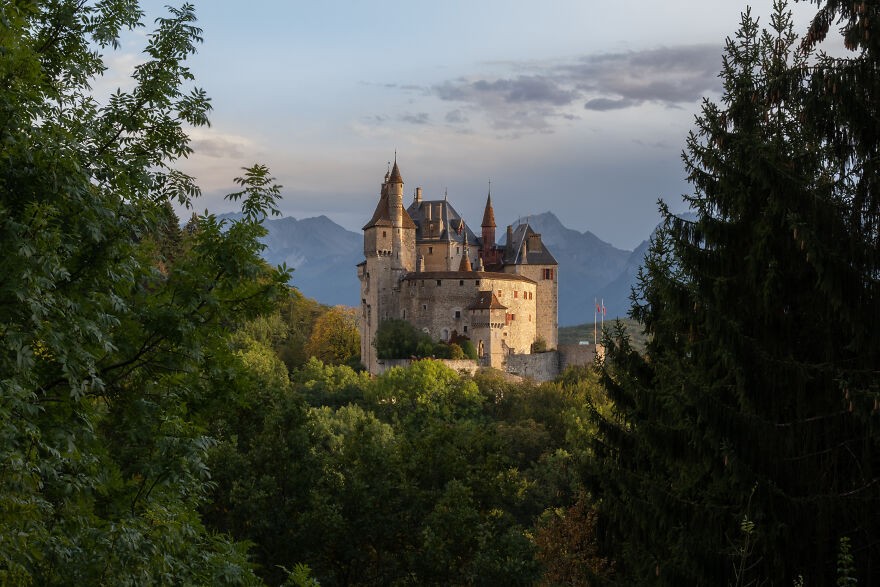 |
| Photo: Vincent Croce |
Seeming to float in the mountains above the crystal clear Lake of Annecy, the fairy tale pretty castle of Menthon-saint-Bernard has witnessed 1000 years of history – including the birth of a saint whose descendants still live in the castle to this day.
It’s said that Walt Disney’s Sleeping Beauty Castle was inspired by the Chateau de Menthon-Saint-Bernard. You can see why. With its towers and turrets reaching up to the sky, narrow archers windows and romantic architecture, it really does look like something out of a fairy tale. Disney visited the castle in 1932 when spending time in Annecy.
Home to the de Menthon family for 23 generations, the castle is open to visitors and it’s rooms are filled with treasures. It’s a fascinating visit. The walls are 2m thick in places and this medieval castle features a touch of Normandy and a hint of Alsace.
Bernard de Menthon was born in 923 at the castle. When his father arranged a marriage for him, the young Bernard allegedly jumped out of a window (which you can see) to avoid his bride. Instead he devoted himself to the church. Over the years he became a priest, bishop and Archdeacon of Aosta, Italy. He was said to have worked many miracles and was made a saint. But he is most remembered for something else.
In 963, Bernard established a monastery and a hospice at the highest point of the pass from which hospitality was extended to all travellers. To this day the hospice du Grand-Saint-Bernard offers accommodation and community meals.
7. “It Took An Epic 4-Hour Drive Before Arriving At A Foggy Castle Wernigerode, Just Before Sunrise”
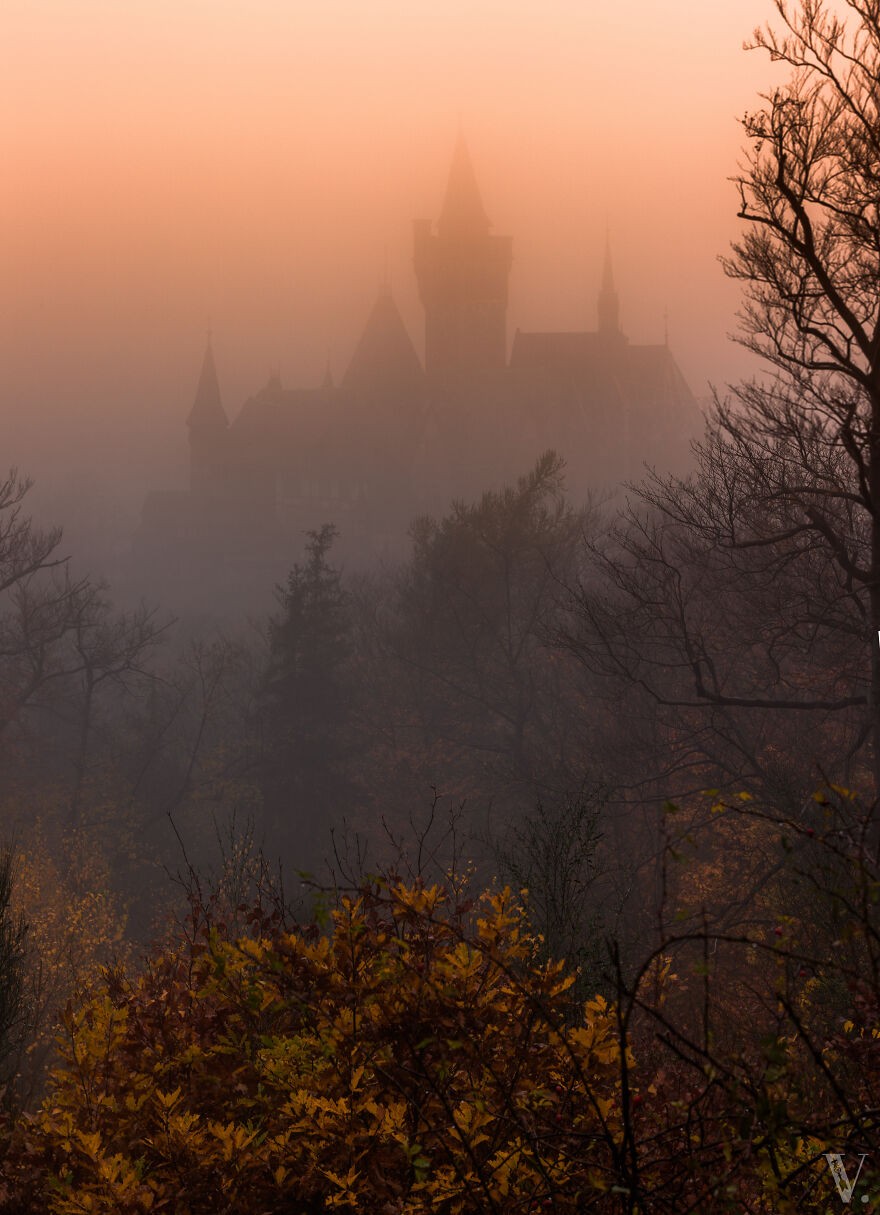 |
| Photo: Vincent Croce |
Towering 300 ft above the town of Wernigerode in the Harz Mountains of Saxony-Anhalt, Germany, stands a romantic baroque castle that was once a medieval fortress.
Originally built as a Romanesque hunting lodge for 12th-century German counts, its tumultuous history included several rebuilds in completely new architectural styles.
Evolving from Romanesque, the Gothic style appeared during the 14th century and can be seen depicted in the large arched windows.
Strolling around the castle ramparts reveals stunning vistas over Wernigerode town.Morphing into a Renaissance fortress in the 1500s, Wernigerode Castle was heavily damaged during the Thirty Years’ War of the 17th century.
One of the longest and most destructive conflicts in human history, the Thirty Years’ War was the deadliest European religious war, resulting in eight million fatalities.
Devastating entire regions, the war spread famine and disease, imposed severe hardships on the inhabitants of occupied territories, and bankrupted most of the combatant powers.
Despite several renovations and later additions, mostly between 1862 and 1893, Wernigerode Castle retains its original medieval gothic tower and spiral stone staircase.
8. “Tarasp Castle In Graubünden. Including A Cotton Candy Sky”
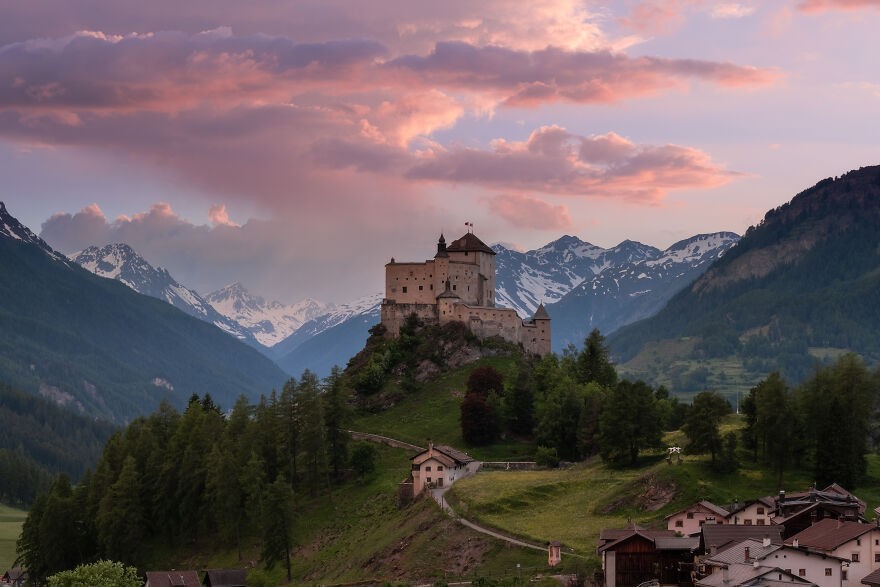 |
| Photo: Vincent Croce |
Scattered hamlets, in the midst of them 100-meter high rocks, a small lake, and above this the most imposing castle in Graubünden - this is Tarasp. Here the human endeavor to rule and the mighty nature of the Upper Engadine converge.
Castle Tarasp, dating back to the 11th century, dominates the eponymous locality in the Upper Engadine. The castle belonged until 1803 to Austria, was laid siege to and fought over several times, but was never captured. In the year 1900, the inventor of the mouthwash Odol, Karl August Lingner, saw the meanwhile empty and decaying castle, bought it and had it completely restored (the restoration project went on until 1916).
Since 1919, Castle Tarasp is open to all visitors, who can view knights' halls and ballrooms, old bedrooms, the castle chapel and the organ with its 2,500 pipes. The castle offers public organ concerts, tours as well as "active vacations," vacations during which the visitor can help with the annual maintenance work.
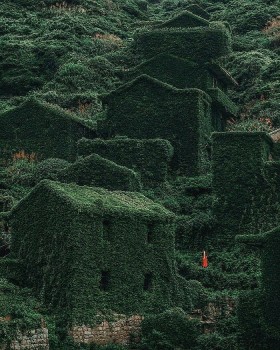 | 12 Breathtaking Forgotten Places And Ruins Around The World 12 breathtaking forgotten places, ruins and historical relics, shared in the ‘Abandoned Beauties’ Facebook group. |
 | Top 10 Most Beautiful Houses In The World Everyone wants a beautiful and gorgeous house to live, but to some people, it is also about outstanding architecture, majestic looking and extremely luxurious. Here ... |
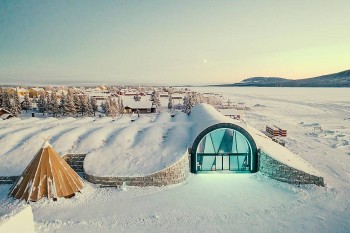 | Eternally Frozen In Ice: Inside The Mesmerizing Icehotel in Sweden If you are tired of staying in a normal or five-star hotel and want something new, ICEHOTEL in Sweden is where you can experience the ... |
Recommended
 World
World
G7 Summit marks turning point in India-Canada relations, says former minister Ujjal Dosanjh
 World
World
India reports 9 Pakistani Aircraft Destroyed In Operation Sindoor Strikes
 World
World
Thailand Positions Itself As a Global Wellness Destination
 World
World
Indonesia Accelerates Procedures to Join OECD
Popular article
 World
World
South Korea elects Lee Jae-myung president
 World
World
22nd Shangri-La Dialogue: Japan, Philippines boost defence cooperation
 World
World
Pakistan NCRC report explores emerging child rights issues
 World
World







